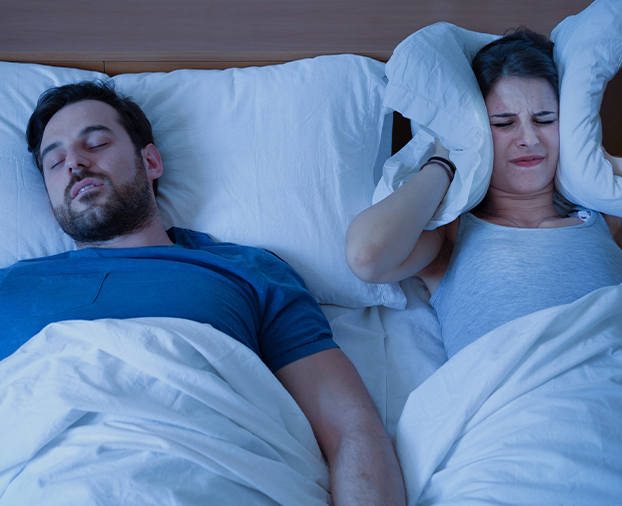Do I Have Sleep Apnea

Do I Have Sleep Apnea? Know the Signs
Do I Have Sleep Apnea? Recognize the Signs
Obstructive sleep apnea is a condition where an obstruction blocks part or all of the upper airway during sleep, forcing the diaphragm and chest muscles to work harder to pull air into the lungs. This can cause breathing to become very shallow or stop briefly. When breathing resumes, it is often accompanied by a loud gasp, snort, or body jerk.
Many patients are unaware they have this condition and may think they are simply suffering from inadequate sleep. Dentists can recognize and treat signs of sleep apnea, as the symptoms often affect the mouth and jaw.
" Obstructive sleep apnea occurs when something obstructs part or all of the upper airway during sleep, causing the diaphragm and chest muscles to exert extra effort in pulling air into the lungs."
Sleep Apnea and Other Sleep Disorders
There are various types of sleep disorders that fall into six categories: insomnias, hypersomnias, sleep-related breathing disorders, circadian rhythm sleep-wake disorders, parasomnias, and sleep movement disorders. Insomnia is characterized by difficulty falling or staying asleep, while hypersomnia causes excessive sleepiness.
Parasomnias involve experiencing unwanted events while falling asleep, sleeping, or waking up. Sleep apnea can contribute to parasomnias by causing intermittent breath loss, which puts stress on the body. Circadian rhythm sleep-wake disorders occur when sleep times are misaligned, and sleep movement disorders involve movement that disrupts sleep. Sleep apnea itself is a sleep-related breathing disorder that leads to breathing difficulties during sleep.
“There are several different types of sleep disorders.”
Sleep Apnea: What Causes It?
“Many patients are surprised to learn about the link between sleep apnea and dental health.”
Identifying Sleep Apnea
Certain groups may have a higher risk of developing sleep apnea than others. Factors such as age can increase the likelihood of developing the condition, with younger men being more commonly affected than younger women. Unhealthy lifestyle choices, like excessive alcohol consumption, smoking, and poor diet, can also play a role in the development of sleep apnea. Making healthier choices can help reduce the risk of developing this condition.
Recognizing the signs of sleep apnea is important. Symptoms to watch out for include a sore throat upon waking, excessive daytime sleepiness, restless sleep, decreased libido, waking during the night, high blood pressure, and gastroesophageal reflux disease (GERD). Children may exhibit different symptoms of sleep apnea, such as bedwetting, choking, drooling, excessive nighttime sweatiness, learning and behavior issues, and problems at school.
“Children may also exhibit different symptoms of sleep apnea than adults.”
How to Treat Sleep Apnea
Fortunately, there are various treatment options available for sleep apnea, including oral appliances. Patients who are suitable candidates for oral appliances will need to have molds taken of their teeth and come back for a fitting at a later appointment. It may be necessary for patients to undergo another sleep test while using the device to ensure its effectiveness. Additional office visits may be needed for adjustments. These devices are discreet and easy to travel with, as they do not require electricity.
Other treatment options include CPAP machines and surgery, which are more intensive treatments that may be beneficial for individuals with severe cases of sleep apnea. Cedar Grove Dental Group can assist patients in determining the most suitable treatment for their condition.




